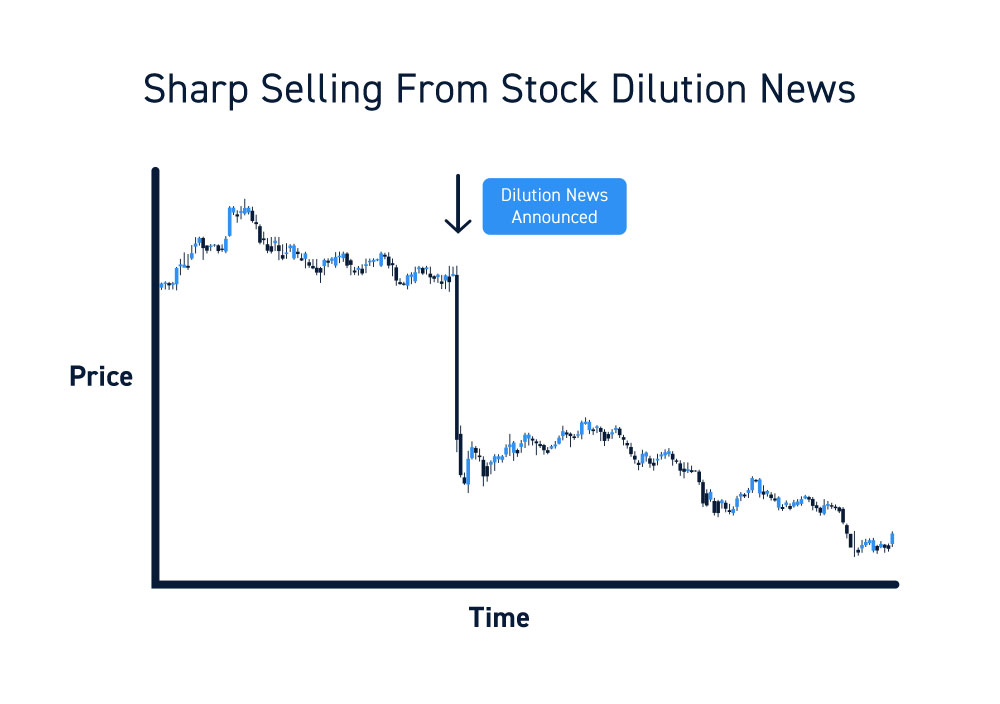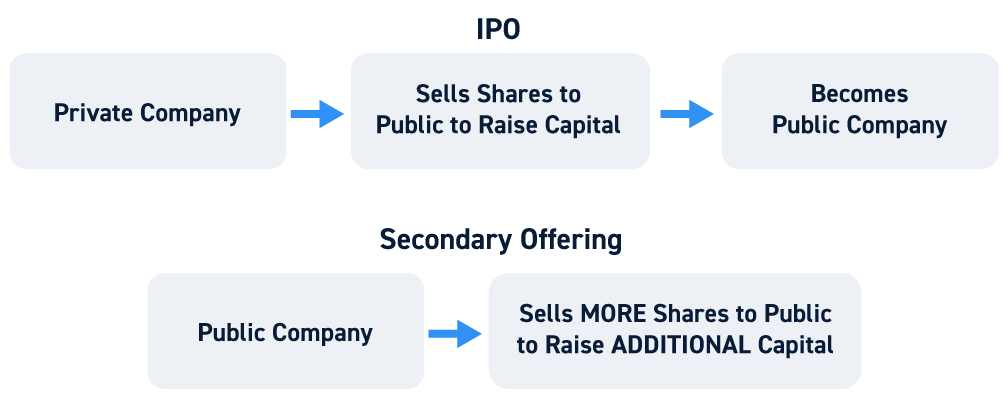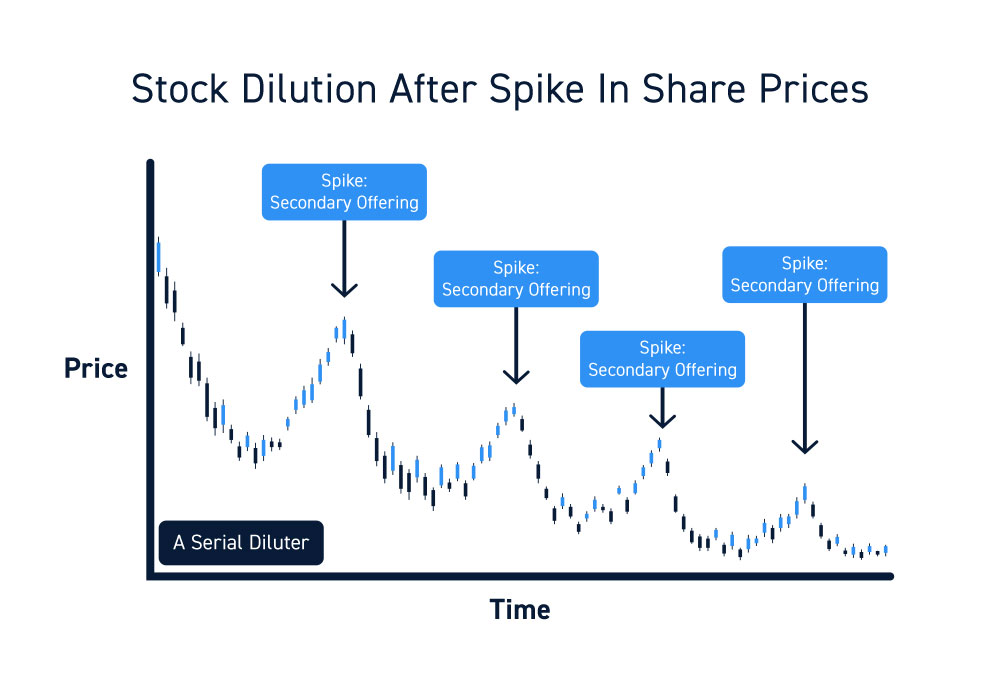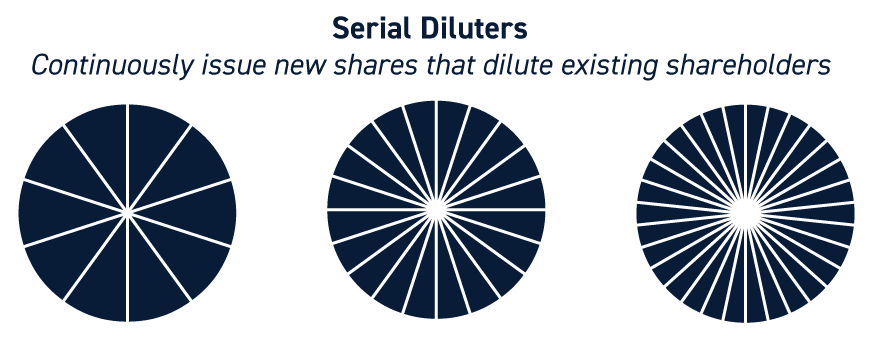Most traders are aware of initial public offerings, but few fully understand secondary offerings.
If you have been trading for awhile, you’ve likely seen their impact.
It’s a typical sequence as shares in a stock spike up strong one day and then collapse in the post-market hours on news of a secondary offering. Traders are often left holding the bag buying into the run up expecting a big price gap up only to get smoked as the company releases news on a secondary. Ouch!

What is a Secondary Offering?
A secondary offering is another opportunity for the underlying public company to raise cash by offering new shares either to the public or to institutions. The stock price tends to fall upon announcement of the secondary since more dilution is expected with a larger float.

How Does a Company File a Secondary Offering?
A public company must file with the SEC for a secondary offering. The securities in the secondary can be stock but also include other types of securities including bonds. You can find the details on secondary offerings utilizing the SEC’s EDGAR database and NASDAQ’s listing of offerings.
Secondary Offering vs. IPO
A secondary offering can only be offered by companies who have already gone through the IPO process. In other words, these offerings are limited to publicly traded companies. That’s why it’s called a “secondary” offering which comes after the “initial” public offering.

Types of Secondary Offerings
There are several types of secondary offerings.
A Company can file for either a dilutive secondary offering in which it sells new shares or a non-dilutive where existing shareholders sell their shares which does not increase the float.
Dilutive Offerings
A dilutive offering adds more shares to the existing float which then lowers the EPS as a result. The market capitalization hasn’t changed but the value per share changes due to the additional shares. It’s like a large pizza with 10 slices that is cut into 20 pieces. The size of the large pizza hasn’t changed, but the size of each piece has been cut in half.

Shelf Offering
A shelf offering can be a combination of securities including stocks and bonds. Shelf offerings are usually dilutive but not immediately. They can start off as a bond and then convert to shares at specific triggers, thus the convertible bond.
What Traders Need to Know About Secondary Offerings
Be Aware of Secondary Offerings
Keep track of news related to offerings. Offerings can often kill small cap momentum runs like the example at the beginning of this article. Small caps are notorious for running up double and triple digits before announcing a secondary offering that pummels shares back down. This is because a high share price will enable more proceeds for the company.
Consider the Price and Size of the Offering
Once a company announces its secondary offering, it’s a good idea to check the filing on EDGAR and to analyze whether the sell-off is an overreaction. How dilutive is the offering? What percentage of the float is being added? Is the company selling tons of shares below market price?

If the offering is priced much lower than where shares are trading, then immediately kick back and watch the offer price as a potential support. If shares are priced higher than where the stock is currently trading, then consider trying to find a bottom reversal area to trade.
You may also consider the purpose of the offering. If the purpose is for an acquisition, new projects, or for investments that are immediately accretive to earnings, then it may be fruitful to look for a bottom reversal. If the secondary is to pay off debt, then you may want to wait it out a little longer.
Consider the Terms of the Offering
As you do your research, make sure to read about the terms of the offering. Is there a lock-up period? If so, then mark the date on your calendar to consider as a reversal day and potential selling into that day. Make sure to note if there are any other stipulations.
Consider the Market’s Reaction
Secondary offerings are usually red flags especially when they occur after a huge run up in shares. Even if the offering is good for the business, it may not be good for the stock. In most cases, the stock will sell off immediately on the announcement of the secondary. Keep in mind that a company can announce it but not provide details until later. Be careful jumping into stocks that have yet to release the terms (IE: pricing).

Beware of Serial Diluters
Some companies have a habitual tendency to implement secondary offerings to raise capital. Be very weary of these companies especially if revenues are small or non-existent. Junior mining and exploration companies are notorious for this as well as the recent “meme stocks”.
Ask yourself some questions. Does the company have a history of diluting shareholders? Do they continue to burn through cash and issue new shares?

Stay away from companies that historically dilute their shares. It’s a good idea to check the outstanding share history and whether it’s been expanding on an annual basis. Be sure to check for a history of reverse splits also as serial diluters like to execute reverse splits to trim down outstanding shares again and repeat the dilution cycle.
Be Aware of Shelf Offerings and Lock-Up Periods
If you are going to hold a stock for a longer period of time, be aware of any potential dilution that may occur in the future (IE: shelf offerings, end of lock-up periods, etc.). Trading secondaries can be fruitful on the short side, however, holding longs for extended periods of time require legwork in terms of research and timing.






